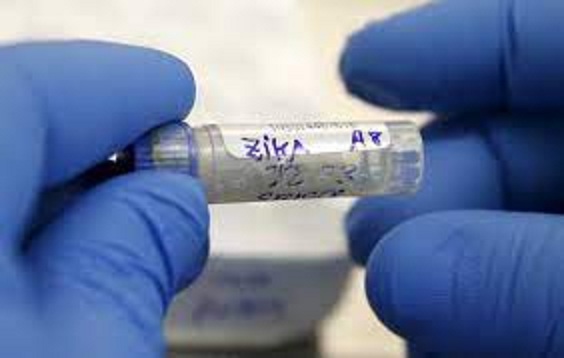Simple-to-apply, needle-free vaccine patch developed against Zika infection

Washington: Scientists have developed a simple-to-apply, needle-free vaccine patch that may protect people from the potentially deadly mosquito-borne Zika virus.
The experimental vaccine developed by researchers at the University of Adelaide in Australia elicited an effective immune response to Zika virus in mice.
The vaccine, described in the journal Molecular Therapy Nucleic Acids, uses the high-density microarray patch (HD-MAP) patch developed by the University of Queensland (UQ) in Australia for delivery.
Zika virus is a risk to people across the Pacific, Southeast Asia, India, Africa and South and Central America.
We can change the way we combat Zika virus with the HD-MAP patch because it is an effective, pain-free, simple to apply, and easy to store vaccination method, said Danushka Wijesundara, a researcher at The University of Queensland.
HD-MAP delivers the vaccine to immune cells beneath the skin’s surface with thousands of tiny microprojections,” Wijesundara said.
In the pre-clinical trial, the vaccine provided rapid protection against live Zika virus, targeting a specific protein called NS1 which is crucial to the virus’s survival.
The vaccine patch evoked T-cell responses that were about 270 per cent higher than from a needle or syringe vaccine delivery,” Wijesundara said.
Zika virus generally causes a mild illness but infection in pregnancy can lead to miscarriage and stillbirths or infants born with congenital malformations, the researchers said.
In February 2016, the World Health Organization declared a Public Health Emergency of International Concern when Zika virus spread across 40 countries in Latin America, causing more than 1.5 million confirmed or suspected cases in a 6-month period.
Limited global surveillance shows Zika virus is active in at least 89 countries and territories but there is no currently licensed vaccine, said Branka Grubor-Bauk, an Associate Professor at the University of Adelaide.
This vaccine is unique because it targets a protein inside, rather than outside of the virus meaning it won’t enhance the symptoms of closely related viruses such as dengue fever, in people who have been vaccinated,” Grubor-Bauk said.
David Muller from UQ said the microarray patch and the vaccine could have benefits beyond the ability to protect from Zika virus.
Because the protein we are targeting plays a central role in replication in a virus family known as flaviviruses, there is the potential to apply our approach to target other flaviviruses such as dengue or Japanese encephalitis, Muller said.
“It could also deliver a vaccine mixture to target the whole family of viruses, providing greater protection,” he added.
A major benefit of the HD-MAP delivery platform is vaccine stability at elevated temperatures — we found the patch retained vaccine potency when stored at 40 degrees Celsius for up to four weeks.
This increases the reach of vaccines in low- and middle-income countries where refrigeration is challenging, said Muller.




